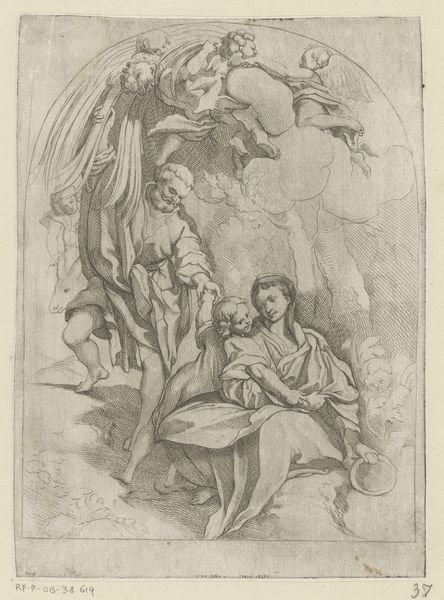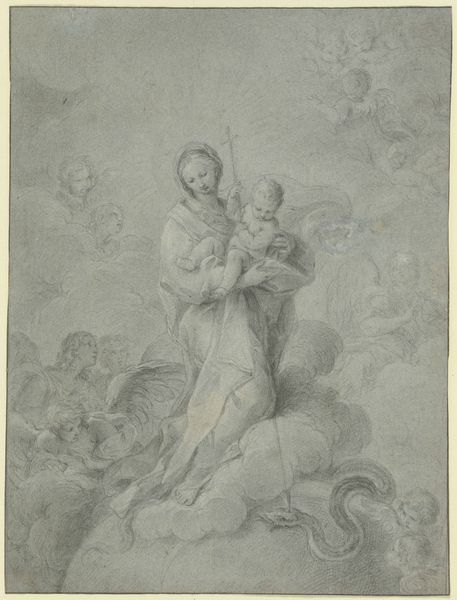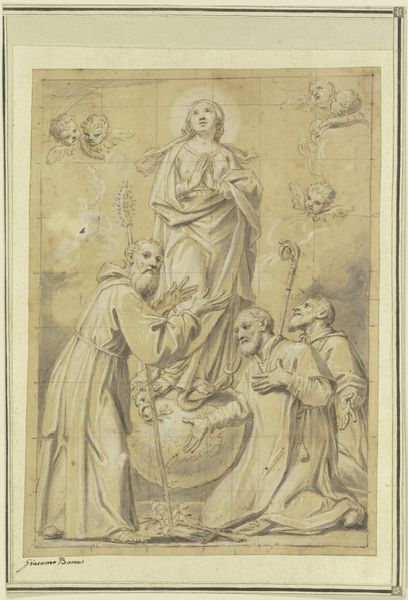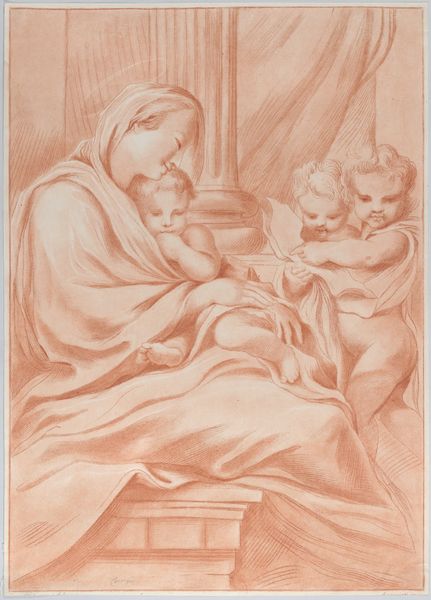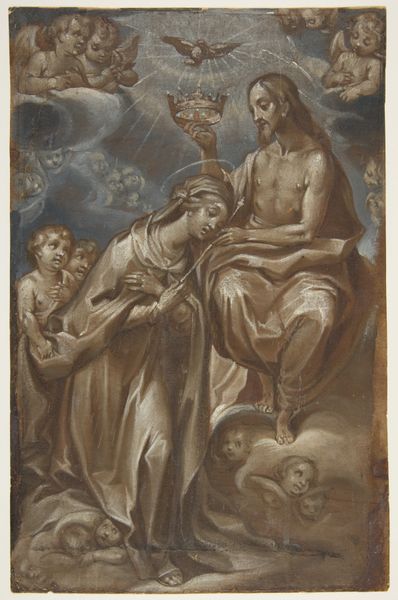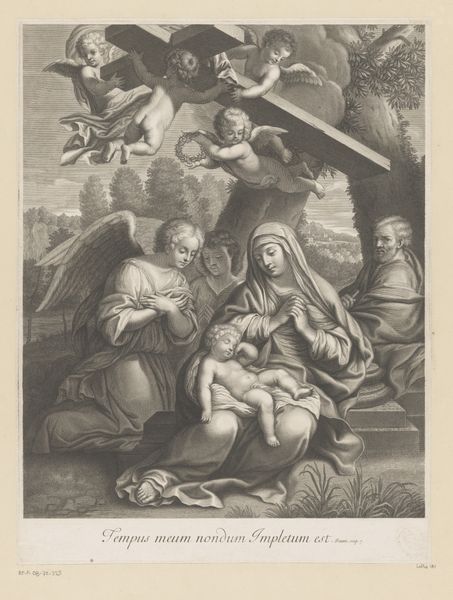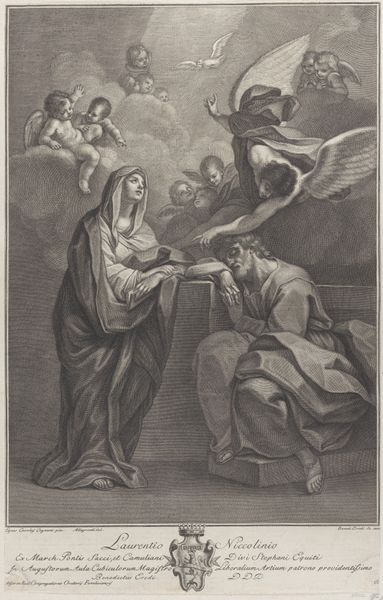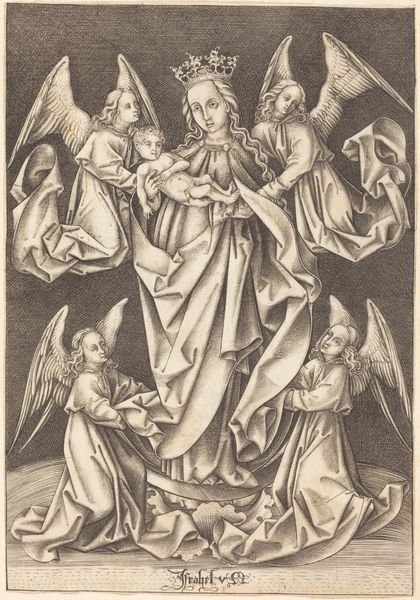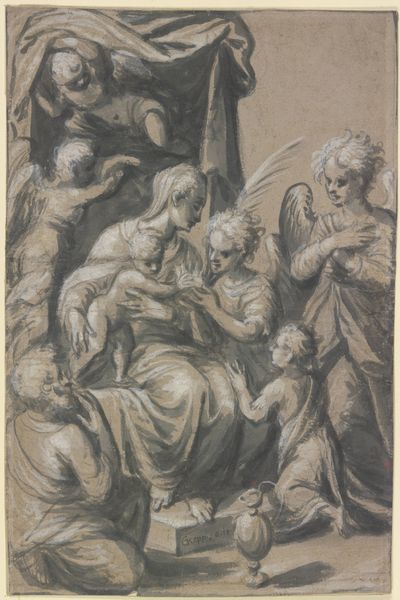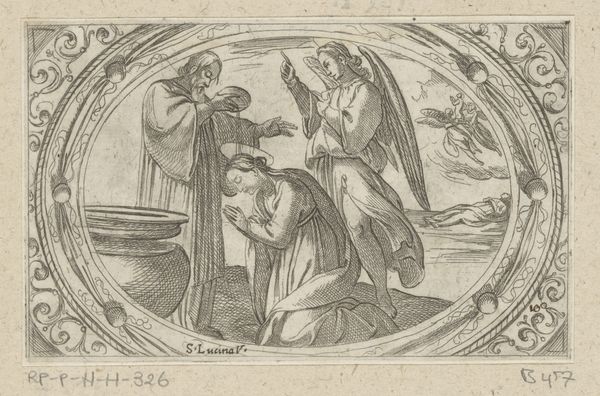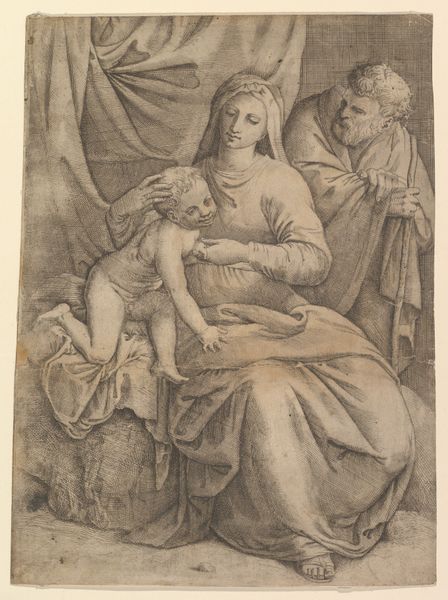
Virgin and Child Adored by a Lute-Playing Angel 1820 - 1852
0:00
0:00
drawing, print, charcoal
#
portrait
#
drawing
#
medieval
# print
#
charcoal drawing
#
figuration
#
11_renaissance
#
madonna
#
child
#
charcoal
#
history-painting
#
angel
Dimensions: 9-3/8 x 8-1/8 in. (23.8 x 20.6 cm)
Copyright: Public Domain
Jean-Jacques Feuchère rendered this drawing in 1850, capturing the Virgin and Child with an angel serenading them on a lute. The lute-playing angel carries an aura of divine harmony, while the halo symbolizes holiness and enlightenment. Musical angels are not new in Christian iconography, often depicted in Renaissance paintings. The lute itself, with its delicate and harmonious sounds, symbolizes celestial harmony and the divine order. In earlier art, music was often associated with philosophical harmony and cosmic order, a tradition harking back to the ancient Greeks, who saw music as a reflection of the universe's mathematical perfection. The lullaby is a potent symbol, universally associated with maternal love and protection. Music and motherhood evoke feelings of warmth and security, engaging viewers on a subconscious level and touching upon deeply rooted emotional experiences. This convergence of motifs—the lullaby, the angel, the lute, and the maternal gaze—forms a rich tapestry of cultural memory. These symbols recur across different epochs, evolving and adapting, yet consistently evoking powerful emotional and spiritual responses.
Comments
No comments
Be the first to comment and join the conversation on the ultimate creative platform.
